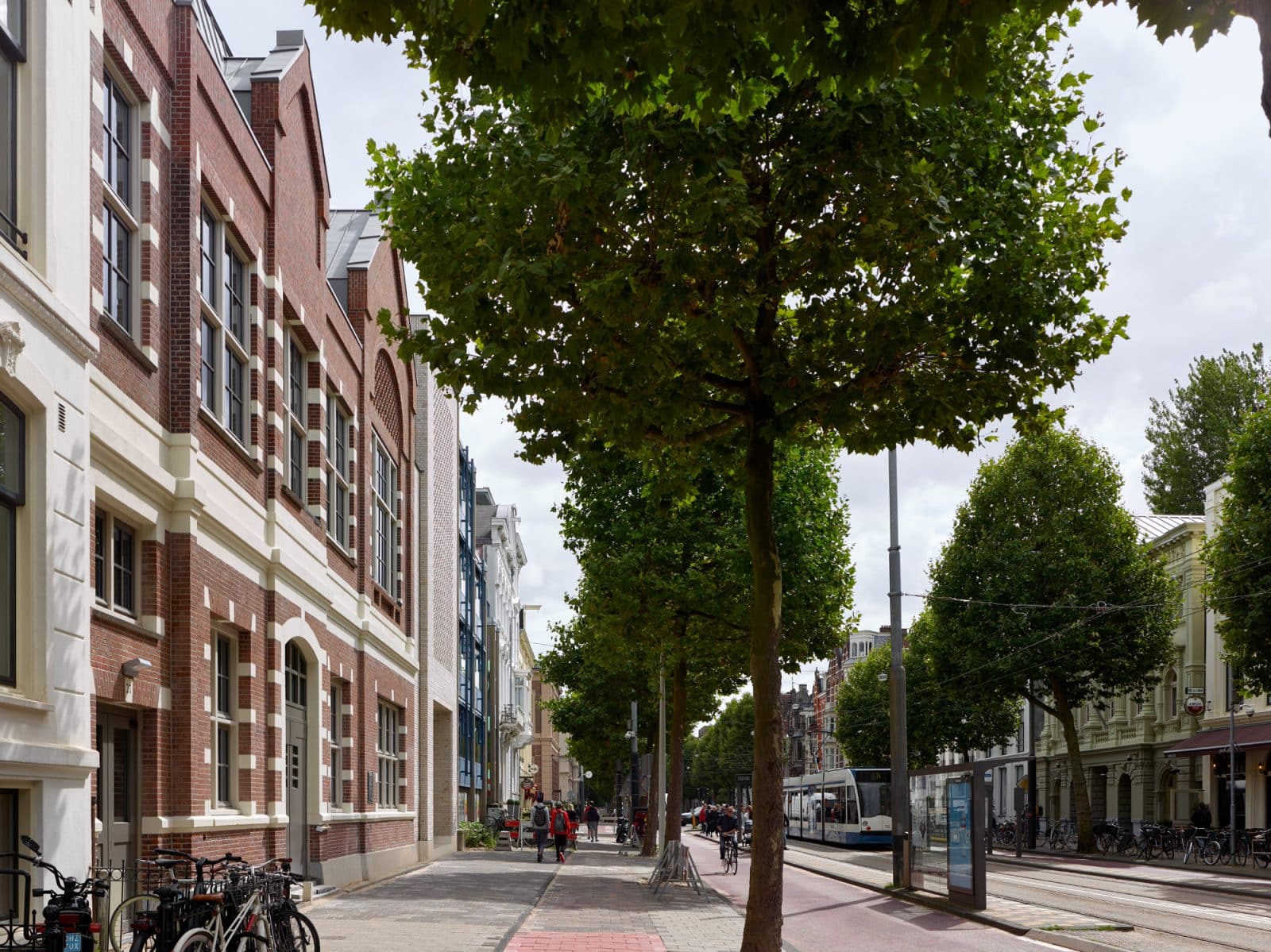Back to School with... Arna Mačkić - Session #2 with office winhov
Tuesday 21 November 19:00 - 21:00.

For the second lecture in the Back to School with... series about the Architecture of Memory, curated by Arna Mačkić, she invited Uri Gilad & Inez Tan of office winhov to talk about their design for the National Holocaust Museum in Amsterdam and why they believe that ‘the architecture should not get in the way of what happened here.’
As a singular and emotionally charged location, the National Holocaust Museum in Amsterdam tells the history of the persecution of Dutch Jews during World War II. Designed by Office Winhov and set to open in 2024, the museum unites two existing buildings located across the street from each other: the former theatre Hollandsche Schouwburg and the former school Hervormde Kweekschool. While preserving the buildings’ surviving historical elements, the museum is formulated as a place for both remembrance and for passing on history to future generations.
The design challenge by the architects Inez Tan and Uri Gilad, was to create a place that respectfully exposes the history and allows familiarity – without forcing an experience, or unnecessary historizing. Tan and Gilad strongly believe that architecture should not get in the way of people’s own imagination as they are confronted with history.
The goal of the architectural design was to provide space for the personal stories for the visitors – to give a sense of place: this happened here.
Architecture of Memory
This series is about the architecture of memory. Places of remembrance and monuments often represent a dominant historical narrative. Thereby they exclude those people who do not recognise themselves in the monuments and places of tribute in public space. More and more we are confronted with the need for forgotten of hidden stories, stories by people who have suffered under the dominant heroes.
How can places of memory and monuments be designed that do not offer a one dimensional perspective on history, but that underline a shared past and a collective future? Places of remembrance that urge people to reassess their perspective and play a part in the daily lives of the urban communities. During this series we will look at different approaches by architects, activists and researchers in thinking about and designing places of remembrance.
About Office Winhov
Office Winhov was founded by Uri Gilad and Jan Peter Wingender. The office focuses on the renovation and extension of buildings of special historical significance, sustainable housing, and multifunctional projects at the intersection between hospitality, culture, and commerce. Developed with a careful understanding of context and an interest in material presence, their work incorporates the environmental, social, and cultural dimensions related to architecture and city planning.
Programme
18:00 – 19:00 Doors open and dinner served
19:00 – 19:10 Welcome
19:10 – 19:30 Recap by Arna Mačkić on the Architecture of Memory
19:30 – 20:15 Lecture by Uri Gilad & Inez Tan (Office Winhov)
20:15 – 21:00 Conversation between Arna, Uri, Inez and the audience
About Back to School with…
For Back to School with… we invite professionals, makers and (critical) thinkers from inside and outside the field of architecture and urban design to share their most current thoughts, recent questions and latest or ongoing research. For each series we ask a professional guest to design and curate a lecture programme around one topic or question that has their urgent and great interest at this moment and to bring together different speakers to elaborate on the subject in three consecutive evening events.
During this series we dealt with the fact that architecture debate has for the past thirty years revolved around ‘extra-architectural’ issues such as economy, program, health and sustainability, while subjects such as ‘Aesthetics’, ‘Design’, ‘Style’, ‘Representation’ have scarcely been discussed. In this series we want to broaden the view on the formal dimension of architecture. On three evenings we will illuminate the subject from three perspectives: the historical, the architectural, and the political.
See for more info on the complete series here